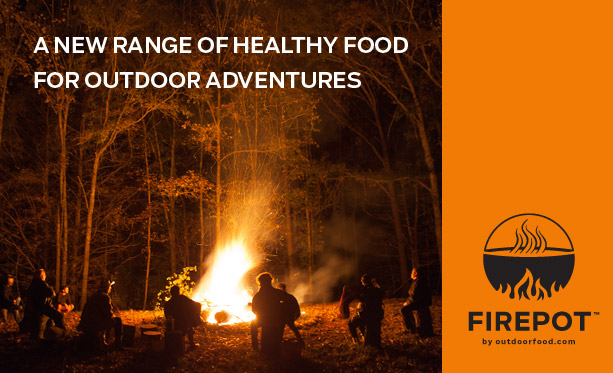Quest for the Summit
From The Field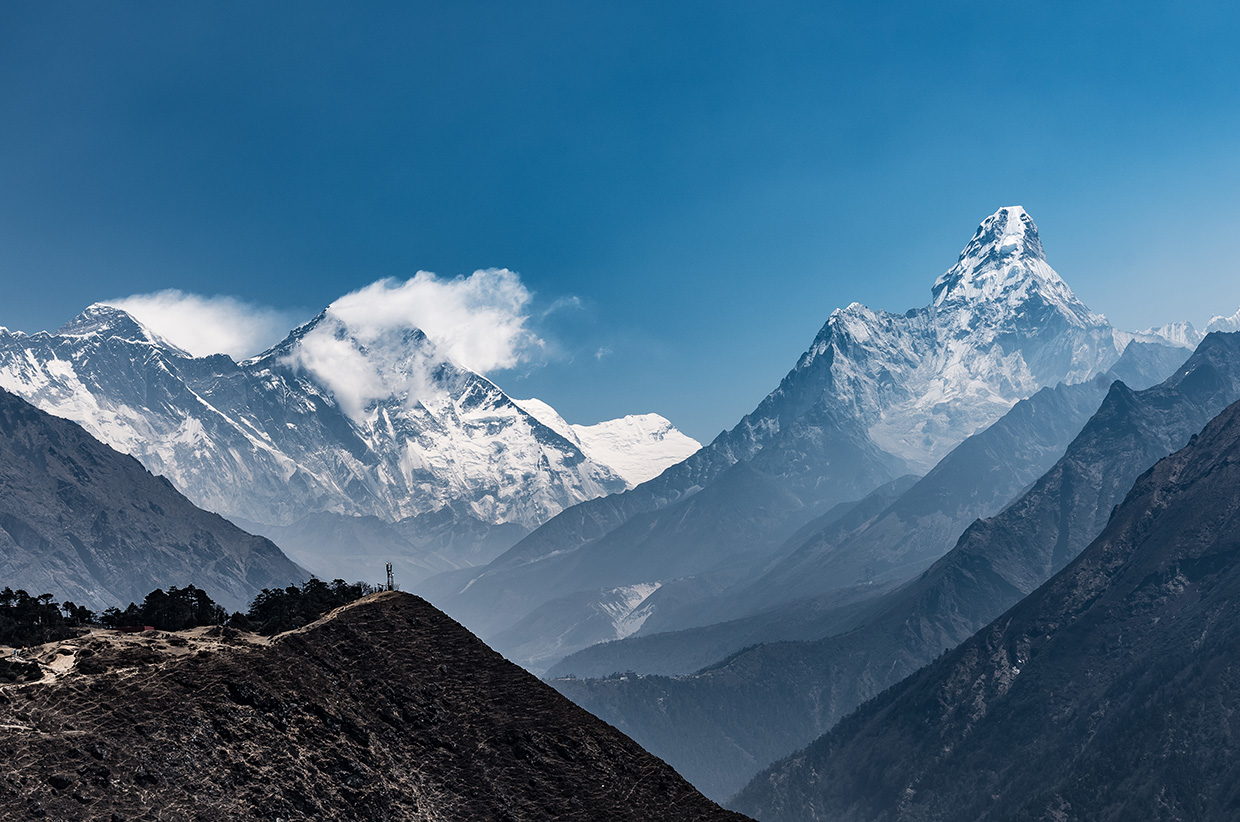
The Gurkha’s Quest for the Summit. 202 years in the making.
Words and photography: John Alexander
My recent journey took me to Nepal and into the Himalayas to understand what continues to drive climbers to invest their blood, sweat and tears in a summit attempt to reach the roof of the world. What I found was an inspiring collective of individuals, each with their own unique reasons, often nested within multiple layers of rationale, unified by a passion for adventure.
The trials and ensuing tragedy of the earthquake have left their mark on the country of Nepal. However, beneath the cheerful disposition in the eyes of the people – particularly the porters and Sherpas who sit at the heart of the mountain industry – one can see an unswerving sense of national pride, underpinned by grit and determination.
Such resilience rises out of the Kathmandu Valley and high into the mountains where rebuilding continues and hope prevails. And although there remains much work to be done, and investment to be made, the renowned Nepali sense of warmth and generosity remains clearly evident. This country’s natural beauty never fails to impress.
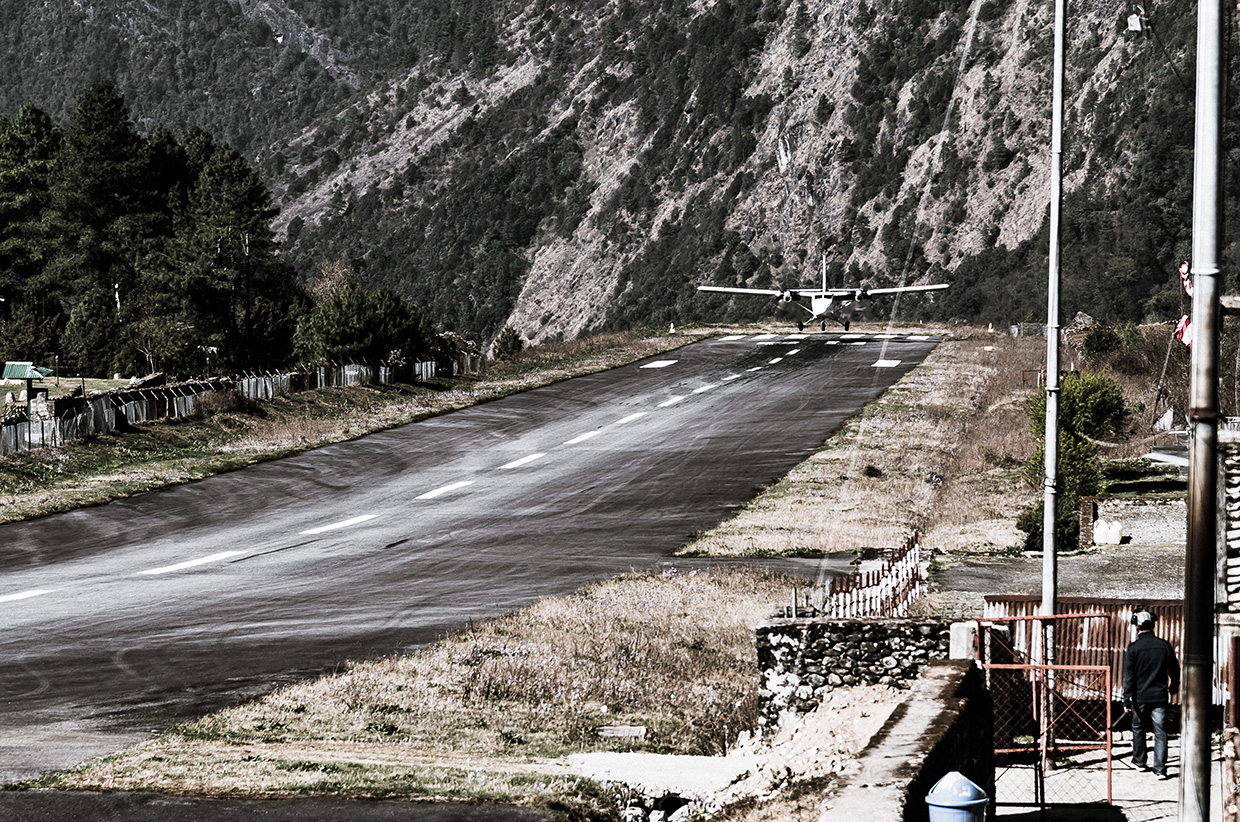
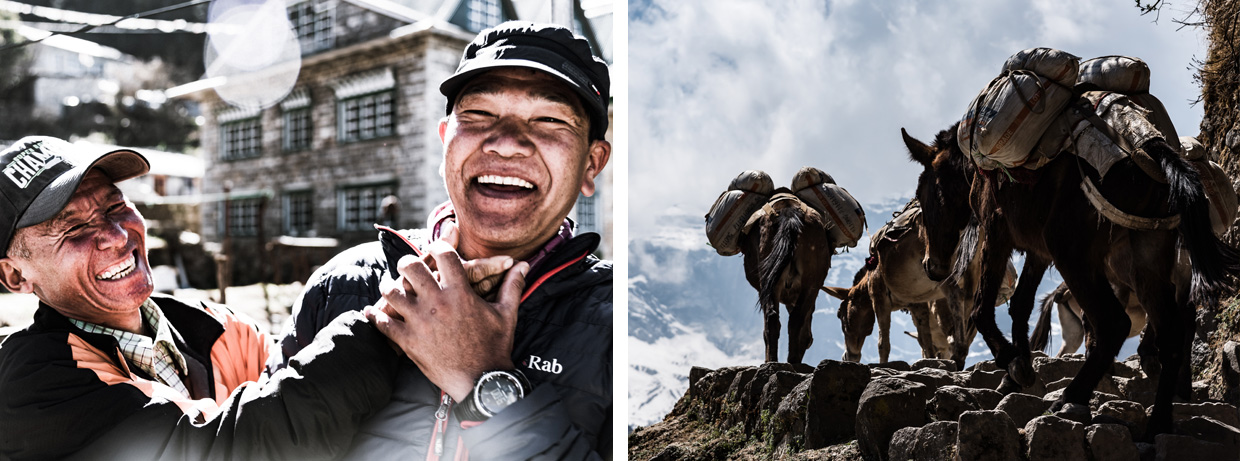
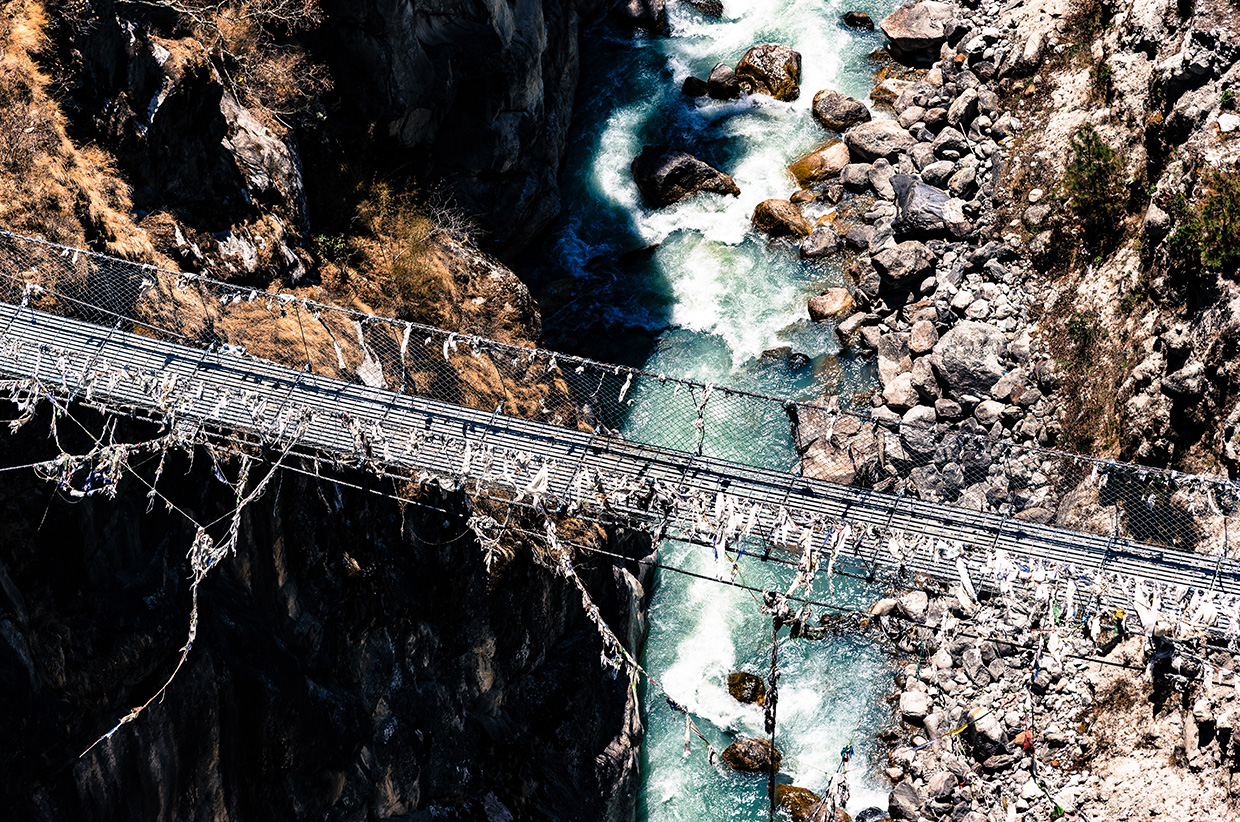
Whether it’s the apparent calm of Kathmandu’s chaos, the serenity you sense as you leave Lukla, or the warmth of the people you meet as you pass from village to village, there is much to discover for even the most seasoned explorer.
After five days on the trail our team arrives at Everest Base Camp (EBC). EBC lies at 5,200m on a bed of ice that emanates from the infamous Khumbu Icefall, nestled between Everest, Nupste and Pumori. Swapping tent pegs for rocks, this multi-coloured tapestry of canvas extends unceremoniously over 1km and in many senses is a high-altitude metropolis. While there may be no café, restaurant or bank, there is a modest field hospital and, moreover, a sense of global community.
Teams from all continents busy themselves with equipment checks, conduct icefall training, discuss planning, and closely monitor meteorological models to chart potential weather windows.
As I navigate my way across the shifting surface, gravel and rocks give way to a bed of ice as if to remind me of where I am. I’m unstable on foot as I look up to see a proud collection of flags, pointing the way to the team I’ve come to see. Flying high, and standing stiff against the breeze, they are set on a central ridge, looking out over the teams below. Stones arranged with meticulous care are a rarity at this altitude and mark out the final steps to my destination. I have arrived.
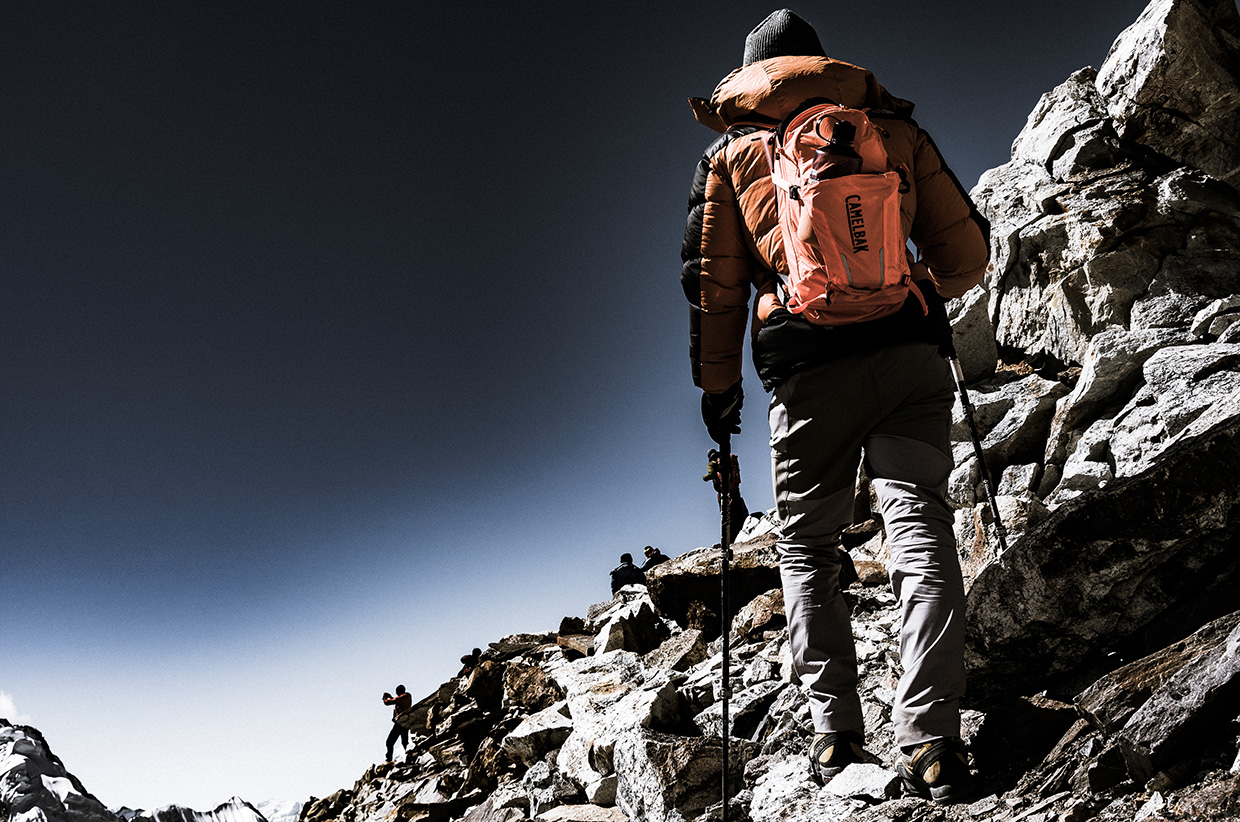
The Gurkhas’ base camp is a polished operation. Not only does its crisp presentation put some of the more luxurious operators in the shade, it is an evident hive of activity. Having asked for the expedition’s leader, Major Todd, I am swiftly greeted by a tall, softly spoken gentleman accompanied by a firm handshake and warm smile. Our discussions begin…
Major Andrew Todd MBE
A lifelong climber, Andrew grew up with the mountains. His love of climbing and the mountains of Nepal led him to join the British Army where he set his sights on joining just 40 other officers in the prestigious Gurkha regiment.
It’s a humble and close-knit community. Their 202-year history is long celebrated; the hallmarks of their regiment are humility, modesty and sheer professionalism. Drawing recruits from Nepal, entry into this regiment remains incredibly competitive. Andrew reveals that last year’s applications totalled over 340,000 for a planned intake of just 340 recruits.
Andrew and I settle into a quieter venue, their operations hub, and with the gentle hum of the Himalayan wind we shift our focus to the present.
So why Everest and why now?
Andrew explains that in 2015, on the 200th anniversary of their regiment, a team of 21 came to Everest. Their objective was to support an attempt on Everest that would see a serving Gurkha soldier reach the summit for the first time in their history. However, even the combination of extensive military planning, physical preparation, and the determination of a cohesive professional team couldn’t predict the earthquake in the Himalayas, nor the impact of this natural disaster on Nepal.
While the majority of the team were at Camp 1 as the earthquake hit, a team of staff remained at base camp. Everyone in their team survived, emerging with only minor injuries, owing to the reactions of one man. However many others were less fortunate. This event continues to stand as one of the worst mountaineering disasters in history with the tragic loss of 24 (10 of whom were Sherpa) and dozens injured, while reported fatalities throughout Nepal were estimated at up to 9,000 with over 22,000 injured.
With any form of summit attempt clearly over, and with everyone back in basecamp, they then played a role contributing to the humanitarian operation and tending to the injured before returning to their respective bases.
Now 2 years on, and in their 202nd year, they are back. While the previous objective stands, and the same closely formed team have assembled, the experience of 2015 weighs heavy on their minds. Andrew explains that while it is a huge honour and privilege to return, he describes how they have applied the lessons of 2015 into a considerable risk management and contingency plan, emphasising that the safe conduct of this second attempt, comes first.
Before I go onto to meet some of other members, I ask what a successful summit would mean to the team. His modest response perhaps reflects their humble demeanour “A lot to a lot.”
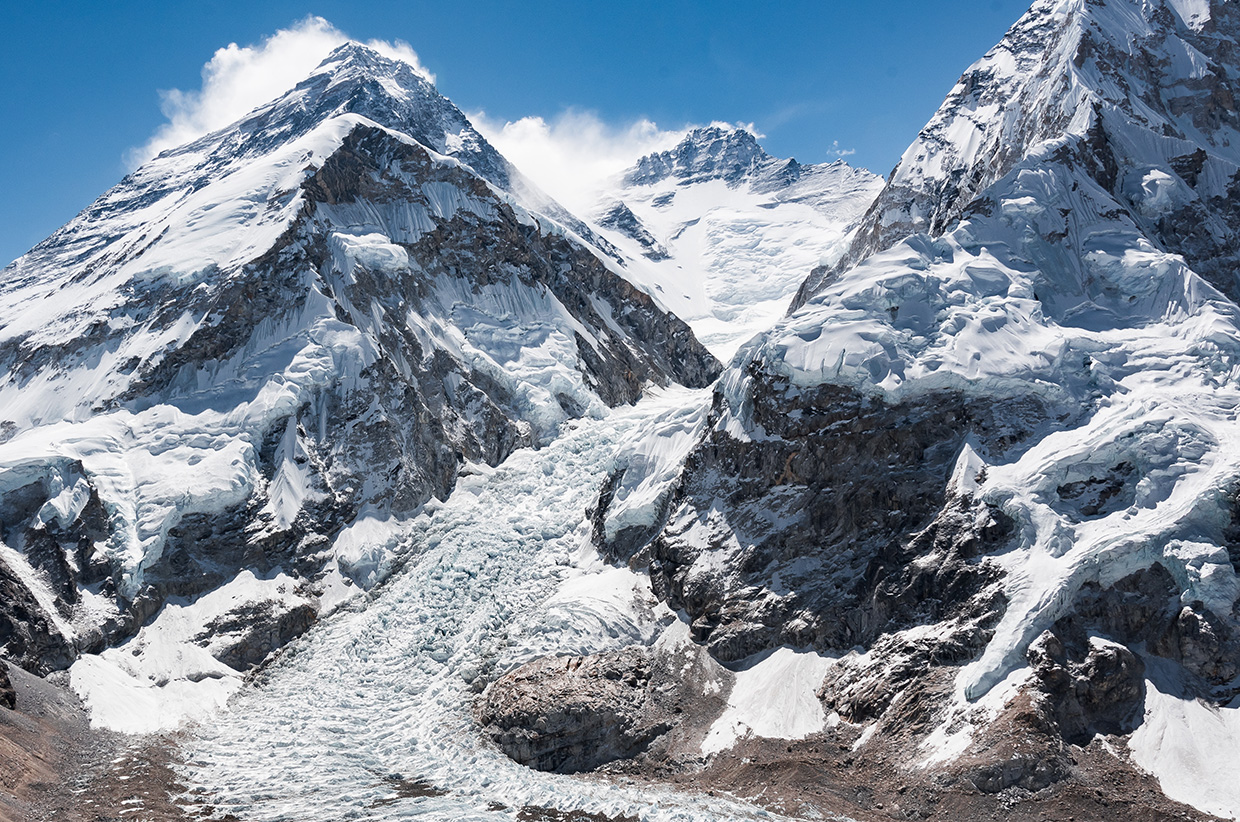
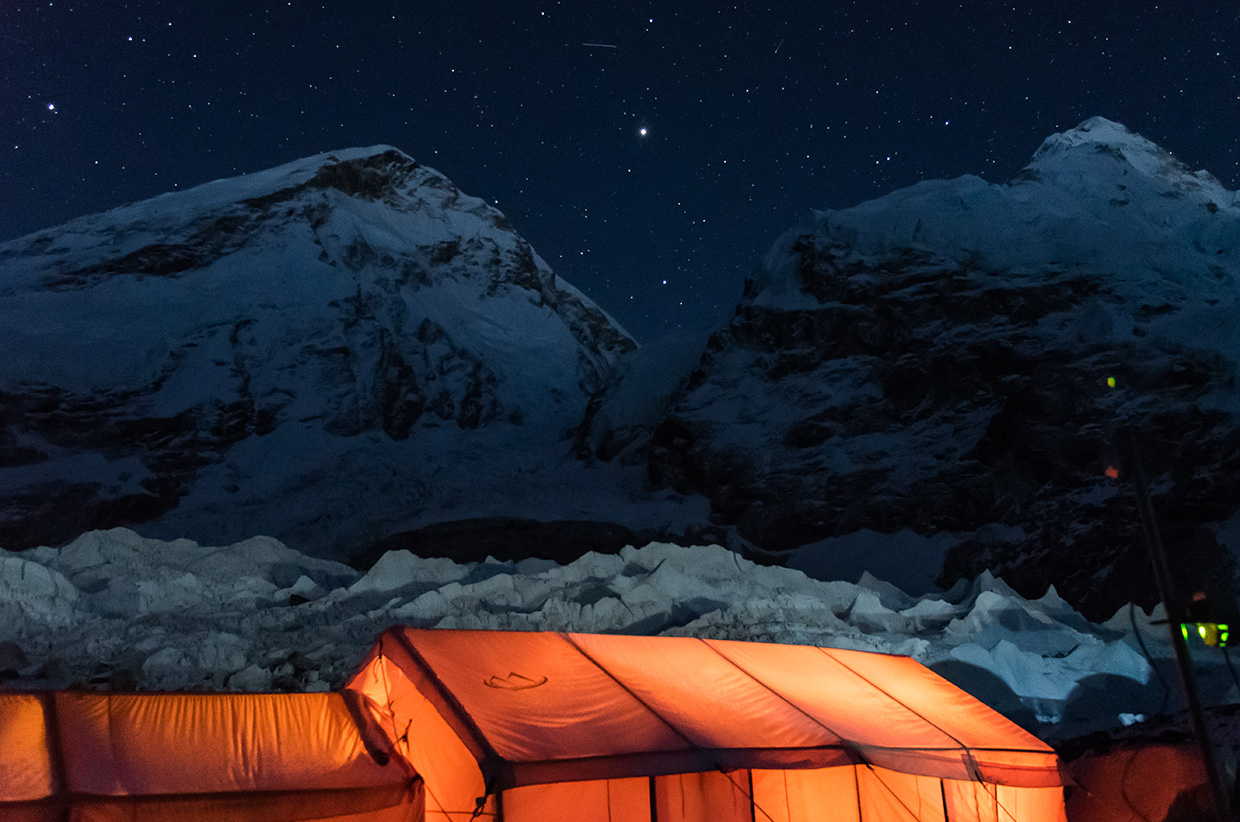
Lt Chris Boote
Just four years into his career, Chris is one of two junior officers on the expedition. Along with his opposite number, he is here with the team to lend support to many aspects of the expedition’s logistics.
I ask Chris what drew him to this regiment and what it means to him to be here. He explains that he discovered his love for the mountains after graduating from Oxford and travelling in Nepal, while a natural affinity for the rarefied culture of the Gurkha regiment led him to apply.
When asked of the summit his response exudes a calm confidence, putting others before himself: ‘The focus is on the summit, and getting one of our soldiers there. My role is to support that.’
As with the rest of the team, it’s an absolute pleasure to be in Chris’s company. He’s a fine ambassador, beaming from ear to ear; it’s obvious that he feels privileged to be part of this expedition and truly honoured to be a Gurkha officer. He is clearly relishing the challenges of the unique opportunity.
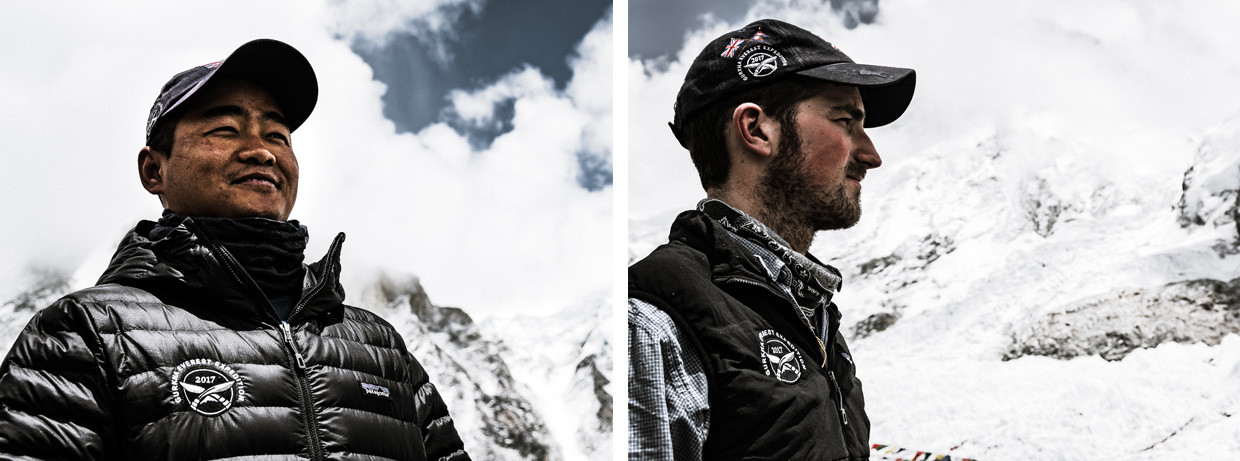
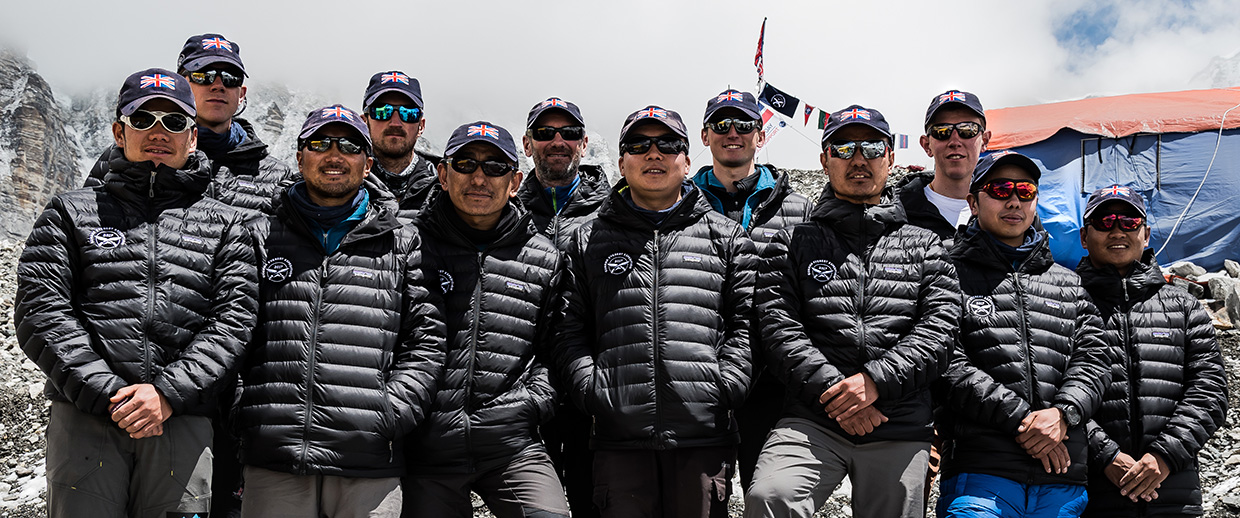
L/Cpl Umesh Gurung
Umesh and I had met the evening before.
He was seated next to me during their evening meal, and I began to learn more about his people’s history and customs – not to mention a little more about both Brunei and Nepali food. Not only (I think it’s fair to assume) were they the only team at 5,300m with After Eight mints, we were sitting before a veritable feast with not an ounce of freeze-dried food in sight.
With a knowing smile Umesh introduced me to a local chilli. As the mess table conversation hushed, and attention drew to me, I found I had been lured into a challenge of sorts, whose successful consumption seemed to be a regimental rite of passage and a test of one’s digestive system!
One of the youngest soldiers on the expedition, Umesh’s climbing journey began in 2010. Eyed by his Sergeant Major for adventure – to this day he doesn’t know why – he was given the chance to join summer and winter expeditions to the Alps and Scotland. Since then, and in between operational rotations to Afghanistan, Brunei and the UK, he has balanced family commitments with time at altitude. Last year saw him climb Makalu.
Umesh hails from Nepal and one of the team that Andrew hopes will summit. Looking out over base camp I ask what this means to him. His gaze shifts away from the icefall and back to me, and his smile says it all.
He was one of two Gurkhas caught in the notorious Khumbu icefall during the 2015 earthquake. He knows just how lucky he was to walk away from that and continues to count his blessings. In itself this clearly means a lot, but considering the events of 2015, this climb has special significance for him.
My spell with the Gurkhas has been insightful, humbling, and inspirational. And is sadly all to swiftly over. If the spirit of grit, determination and resilience shines from the people of Nepal, then these climbers, these soldiers, personify those very same qualities in a team of 21.
I wish them well.
Read more from John’s recent journey to Everest here on Sidetracked soon.
Written by John Alexander
Website: johnalexander.co
Twitter: @JohnAlexphoto
Facebook: /John-Alexander-Photography
Instagram: @johnalexanderphotography



